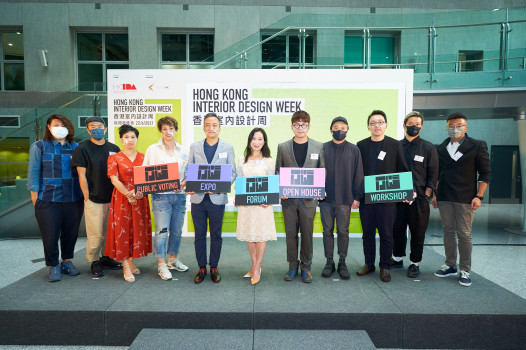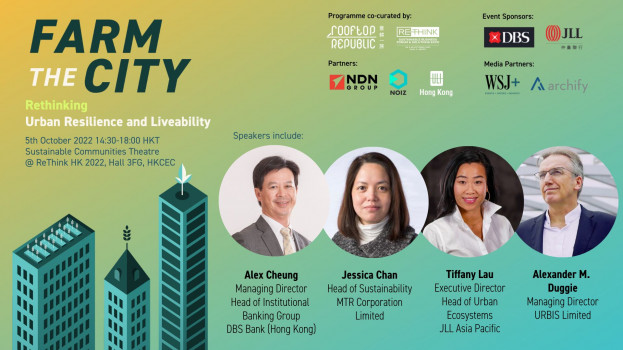Living and Breathing Sustainable Design with Bonnie Herring



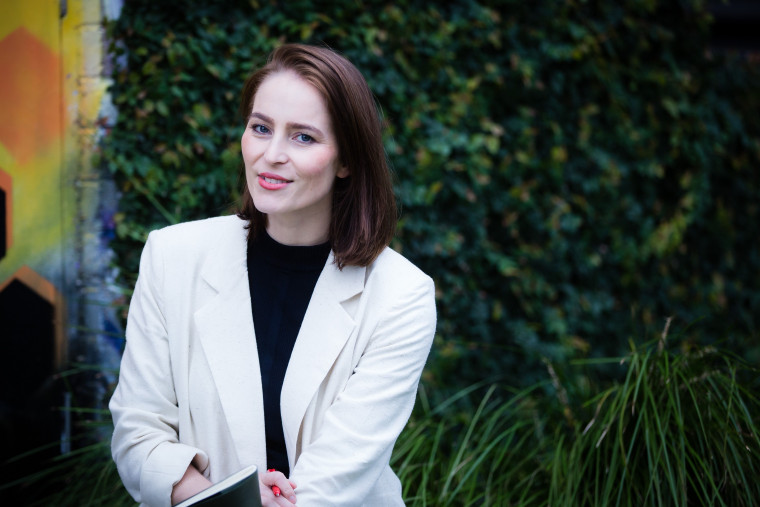
“Finding a sustainable lifestyle is an ongoing series of choices and commitments”, asserts Bonnie Herring, Director of Architecture and Sustainability at Breathe. In this interview, Bonnie talks about the importance of sustainable design and how Breathe’s first apartment building marked a shift in the firm’s focus toward replicable planet-saving housing.
Please introduce yourself and Breathe.
I’m Bonnie Herring, director of architecture and sustainability at Breathe. Breathe is a Melbourne based studio who have been practicing architecture and championing sustainable design for the last 20 years. We look at every project through a triple lens of environmental, financial and social sustainability. Our projects range from multi-residential, single homes, small commercial and some other community advocacy projects. Breathe has been carbon neutral since 2018 and as a founding signatory to Architects Declare, we helped lead the campaign to have Australian architects commit to carbon neutrality by 2030.
What is your most memorable project to date?
The first apartment building we completed was particularly memorable because it marked a shift in the scale and focus towards the type of work we're doing now.
The Commons was intended to be a replicable, planet saving housing model which focused on building the essentials rather than responding to more speculative market demands. In a number of ways it was quite a shock to the industry. It became known more for what it didn't have rather than what it did. We sought to build less and to give more, avoiding superfluous finishes, building elements, systems and uses. We didn’t build car spaces, individual laundries or second bathrooms all with the view that those savings would be invested back into the base build to make it a more livable space for occupants. There was a greater focus on shared communal areas and greater amenities external to the apartment to facilitate and foster a community oriented experience.
This project was also the inspiration and catalyst for Nightingale Housing and its not-for-profit residential developments.

Copyright 2014 Tom Ross.
In 2018 Nightingale 1 won the national award for housing and the national award for sustainability, and was the first residential building to win the Melbourne Prize. Jeremy McLeod stated that “Nightingale won that award because people seemed genuinely happy to be living there.” What is it about Nightingale housing that makes people genuinely happy?
Awards like this point to a heartening optimism and appetite for change in housing development. And perhaps a shift in market expectations toward environmental, social and economic drivers. I don’t know of any happiness metrics, but as a resident I have certainly enjoyed knowing all of my neighbours, during the design, delivery and since. Being helped by and helping them is an ongoing, genuine exchange that is genuinely fulfilling. Having spent 250+ days of lockdown here, and most of it on parental leave with my young child was an incredible test. The generosity of the design, and the comfort and shared spaces has supported us to make meaningful connections.
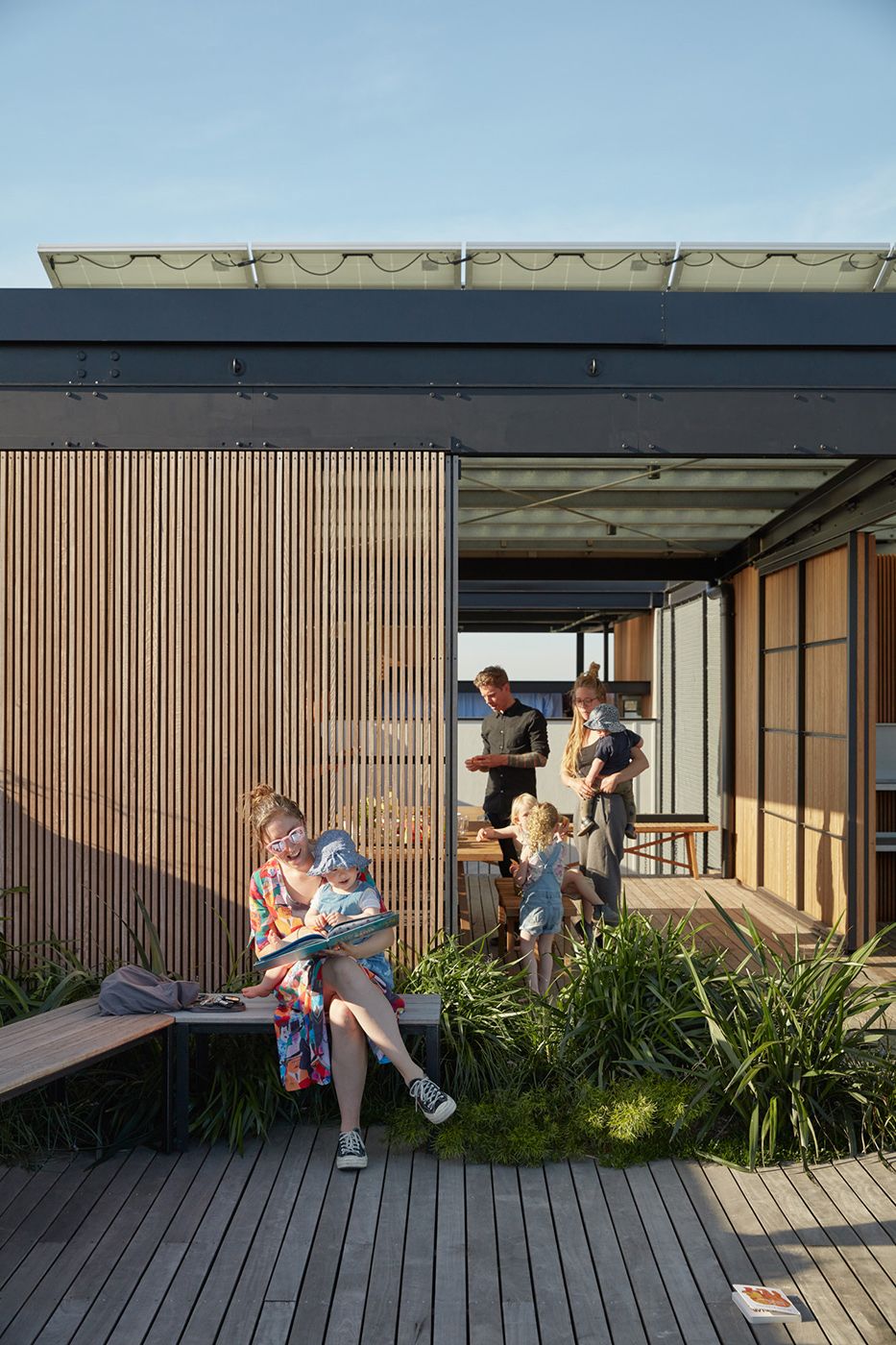
Copyright 2017 Tom Ross.
I quote from your website: “We never cease to question the status quo, create new systems, and overturn convention when convention isn’t good enough.” What design and construction conventions do you believe need to change so we can preserve our existing biodiversity and climate?
Issues of climate and biodiversity have come to a head. The design and construction sector has been complicit in its duplication of conventional responses to how we build and power our buildings. We need to both respond and adapt to our increasingly extreme and volatile climate, and we need to do it quickly. More generally this might be approached through building electrification, powered by renewables, with carbon optimisation combined with offsets to meet carbon zero targets. Material conventions could be better approached through careful specification with regard to toxicity, chain of custody, environmental certifications and circular flows of resources. Preservation of biodiversity and climate can and ought be tackled many ways. It might seem obvious, but an example such as vegetating our buildings and sites creates habitat, oxygenates, cools and relieves our hot urban landscape.
Breathe has been carbon neutral since 2018. Can you tell us about the process and any helpful tips for other firms wishing to become carbon neutral?
Breathe has always sought to limit our environmental footprint through our work and through our organisation. Going carbon neutral just made sense, and the audit process helped us validate, reduce and scrutinise our actions even more rigorously. Breathe were early signatories to Architects Declare in Australia - an initiative formed in light of climate science and reporting by the IPCC and others - acknowledging the twin threat of climate change and bio-diversity loss. Through this initiative and elsewhere, we have been vocally advocating that the business community join us in the switch to renewable Green Power, and carbon neutral operations. We went to an external consultant for our audit, carbon credits and certification - but there are other ways to self report and calculate your organisation’s footprint online. There is a guide on the AD website about this process.
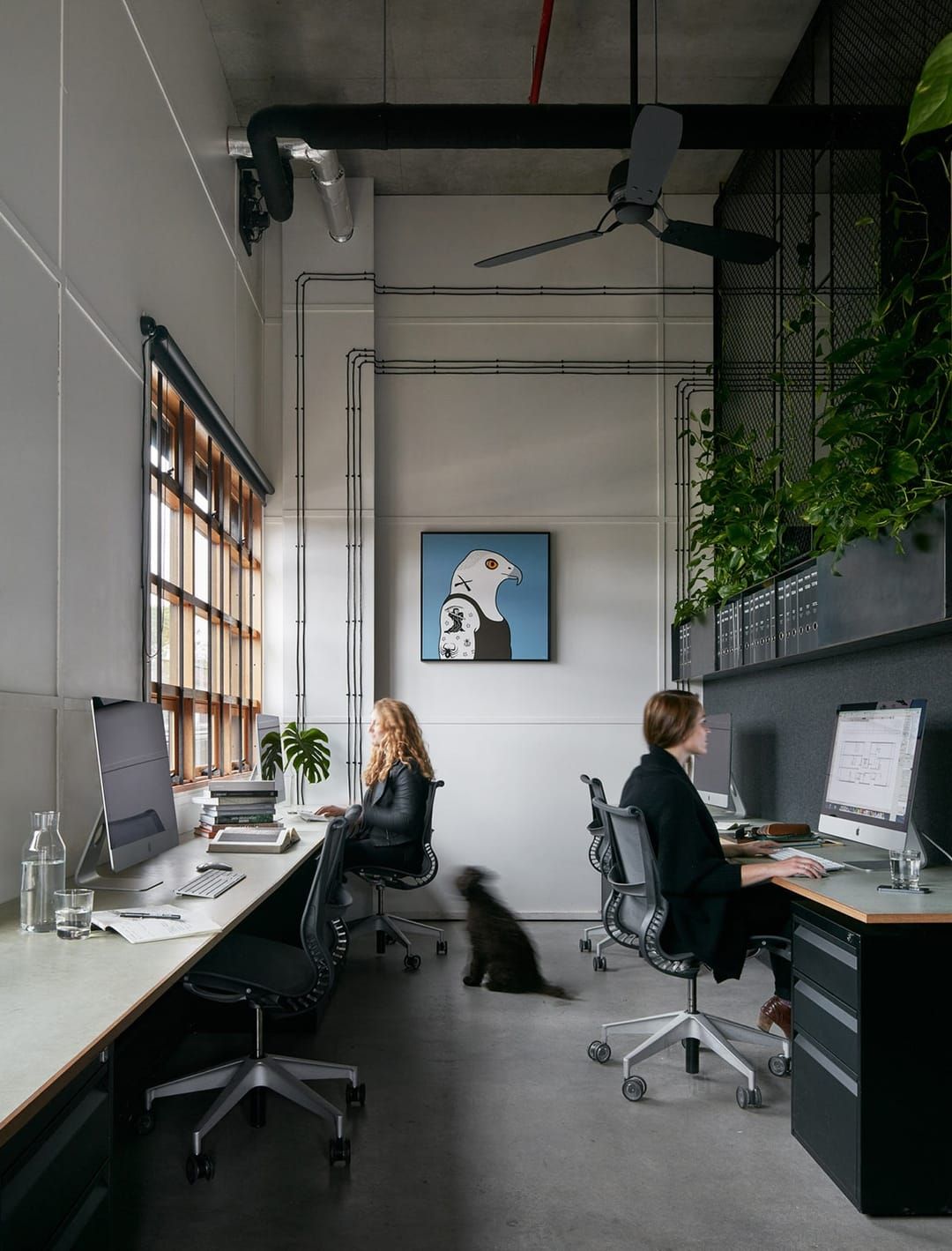
Image courtesy of Breathe
Do you prefer to work with clients who share the same environmental agenda and if they don’t do you educate them?
I do believe it's wonderful to find your tribe - to find clients and collaborators whose values aligned. But perhaps there is greater value in finding and working with people who don't share the same agenda. To interrogate your position, to provoke environmental consideration, and to create new opportunities for positive impact. Invariably though, we can learn from each other in the process. Trying to do the right thing for the planet can be tricky. Our understanding of the climate and biodiversity emergency, and how to appropriately respond through our design decisions is evolving. It’s exciting, and sometimes unknown - we need to bring our team on the journey with us.
The tiny homes movement is booming. Do you see this as a viable option for many to live a more economically, socially and environmentally sustainable lifestyle?
I suspect that it might be one solution for a small section of the community but I don't necessarily think it appropriate for broad scale application. That said it does point to the need for a range of accessible options as diverse as our community. But for the most part, I think finding a sustainable lifestyle is an ongoing series of choices and commitments; to live more sustainably, to switch to induction cooking and electric heating, to select renewable Green Power, to recycle, to engage with your community. It's such a pleasure to work on projects that help to augment and support this change, but lifestyle change is a process reliant on the individual.









 Indonesia
Indonesia
 Australia
Australia
 New Zealand
New Zealand
 Philippines
Philippines
 Singapore
Singapore
 Malaysia
Malaysia


